Studio Updates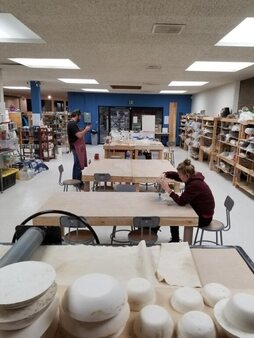 Hello and welcome to the Burnish Studio Blog. It is the end of week six in the studio, so that means there is a big push to start glazing all the work you have been making this summer. There are only about ten days between sessions this time, so please get your work finished and out by the end of the first week of September so that we will be ready to roll when the fall session starts. Thank you for your patience with the clogged sink. We will be fixing it as soon as possible so that it is working well again. When it does get working, remember to never put your clay in the sink, only in the buckets, so we can avoid this type of problem in the future. The Value of Practice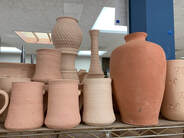 If you are looking to improve at throwing, there is nothing like practice. It doesn't matter how long you have been working with clay, or who you have studied with or learned from, practice is the one thing that will always up your throwing game. One of the most efficient ways to practice is to practice with purpose. This means that when you sit down at the wheel, you have a solid idea of what you are hoping to make there. Similarly, sitting behind the wheel of a car, hoping to go somewhere but not really knowing where you are going or the route you will take to get there will not garner very good results. Usually. It is much the same with throwing. If you sit down at the potter's wheel, and you are just wanting to "see what happens", not only will improvement be a challenge, it will also be difficult to measure any improvement that does end up happening. Practice with structure. If you are hoping to make something you have never made before, sit down at the wheel with at least five balls of clay so that you can approach the project in different ways. When you notice yourself improving, acknowledge it and do not belittle any improvement you make. Finally, try not to compare yourself negatively with other potters. We are all on our own throwing journeys. Spending energy comparing yourself to people who are sitting next to you distracts from actually improving. And remember- have fun. Clay is awesome. You could spend your whole life working with it and still have tons of clay avenues left un-ventured. Tip of the Week!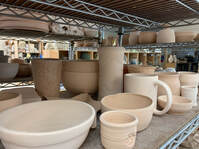 When it comes to glazing, there are a couple things you can do to ensure that the glaze goes on your pot well. One is to either dunk the bisqued piece in water or run water over it. When you allow your bisque ware to soak up water before you glaze it, the pot will take the glazes on in a more even and balanced way. Remember to let your bisque ware dry before glazing, though. Another thing is to glaze the insides of your pots first. This way, when you glaze the outside, you wont have to worry about any of the inside glaze dripping on your carefully dipped outer glazes. Bonus: As always, experiment glazing on lesser pots before you get to the ones you really care about. Knowing how you want to glaze your prized pieces before you start glazing will save you time, energy, and stress. Glazing should not be stressful, but fun. Make sure you give yourself every opportunity to be successful with it. OpportunitiesCrysalis Emerging Artists Institute offers a three-tiered residency program. Up to 16 artists will be invited to participate in the 2023 hybrid residency program. This is a well-supported opportunity that offers both virtual and in-person components. For more information and to apply, visit the website. Deadline for applications is August 25.
Artists are invited to apply for residency at 500 Capp Street. This five-month program in San Francisco, CA runs from fall 2023 to spring 2024. The focus of the program this year is to create work illuminating experimentation around the boundaries of genre, medium and material. To learn more, visit the website. Application deadline is August 30. The Bryn Du Artist in Residence program is accepting applications for its next cycle. This 8-12 week program is intended to offer an inspirational setting for artists while introducing them to the Granville, Ohio, community. Each opportunity comes with a stipend. To learn more and to apply, visit the website. Deadline is August 31.
0 Comments
Studio Updates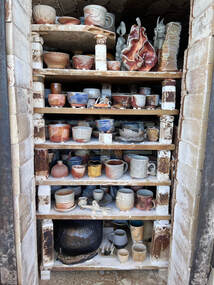 Welcome, once again to the Burnish Studio blog, where we will let you know about what has happened, is happening, and what is coming up around the bend. This last week we unloaded a gorgeous cone 10 soda firing. We also launched the registration for the fall session, so if you are planning on signing up, do so by Tuesday, August 8th, at noon. ALSO: the next Critique Club is August 29th. Additionally, we have some pretty great workshops coming up, including a BIPOC cone 10 soda firing with visiting artist, Dwayne Sackey! BIPOC Cone 10 Soda Firing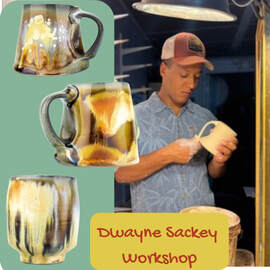 Burnish Clay Studio is excited to offer what we hope will be the 1st of many Annual Soda Firing for Black, Indigenous, and People of Color (BIPOC) participants. This Cone 10 firing will be led by Will Jenkins Abraham, and featuring Dwayne Sackey as the Visiting Artist from Portland OR. Sackey earned his BFA from Oregon College of Art and Craft in 2019. Merit-based scholarships supported him: the Gregori Jakovina & Larry McDonald Scholarship, the Ellice T. Johnston Scholarship, and the OCAC Community College Scholarship. In 2019 Sackey showed at the Multnomah County Justice Center & in 2021 he showed at the governor’s mansion. Sackey was a recipient of the 2021 studio potter grant for apprenticeship alongside his mentor Chris Baskin. Sackey published 3 articles in pottery making illustrated, one in 2021 & two in 2023. Sackey taught a workshop at clay by the bay in 2022 and demonstrated at NCECA in 2022. @dwaynespots Check out the details on the Burnish Website. Pass this along to anyone who you think might be interested. Share to your networks. Meet the Face Behind the BlogMeet Sara Young! Burnish’s own social media/blog master/instructor of children and adults alike. She sculpts, she pots, she writes, and in her spare time, she finds new and interesting ways to stick it to the man. She was educated on the mean streets of the village of Oak Park, and from there, found her way to Portland, where she earned three educational degrees, garnered many accolades for subverting the dominant paradigm, and slowly but surely found her way to Bellingham. She is an old soul in a middle aged woman’s body with an appetite for destruction and a deep need for community and harmony. She keeps her feet on the ground while she reaches for the stars. She is prone to hyperbole in her own humble way. She loves dogs and Dylan Mc Drooleyface in particular. She is ecstatic to be a part of the Burnish community of all-stars, where she teaches kids pottery and hand building, and adult wheel and sculpture class. If you want to get the full scope of Sara’s work go to spikeofalltrades.com Weekly Tip!Clay is all about timing, so it is important to know when to do what so that the piece you are working on can withstand the pushing, carving, and shaping it is having to endure.
Artist Resourcese-artnow – Jobs, Grants, Competitions, Open Calls, Exhibitions, Residencies (Artists, Critics, Curators)
New York Foundation for the Arts – Jobs, Grants, Open Calls, Studio Listings TransArtists – Worldwide Residency Search Barcelona Residencies – Jiwar Creation and Society Res Artis – Worldwide Residency Search Call for….. – Worldwide Open Calls Callforentry – Open calls with a management system for applying Center for Emerging Visual Artists – Artist Services, Open Calls Art Insight – Artist Services, Open Calls, Opportunities, Directory How’s My Dealing? 2.0 – A website where artists can review galleries, art fairs, and mail scams that take advantage of artists by charging them or being an outright rip-off. Art Rabbit – International Art Exhibitions & Events, Open Calls Biennial Directory – Global art exhibitions Grants – GrantSpace FAQs about Grants Elizabeth Greenshields Foundation Representational Art Only Joan Mitchell Foundation – Painters, Sculptors Pollock-Krasner Foundation – Painters, Sculptors, Printmakers Harpo Foundation – Visual Artists National Sculpture Society – Competitions, Programs, Awards Mayer Foundation – Emergency Funding Puffin Foundation – Socially Conscious Job Listings – The Art Newspaper Studio Updates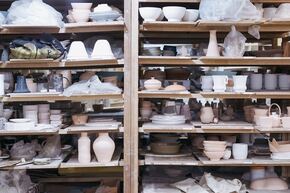 I know what you're thinking- how in the world can it already be week four!?!?!? I know the feeling, yet, here we are, half way through the summer session, the shelves are full, the kilns are pumping, and tomorrow, we are loading our cone 10 soda kiln! Yes, it is ALL happening, so with that in mind, here are some things you might want to consider while going about your work in the studio. First, weeks seven and eight are for finishing work only, and not starting new work. B, there is only a one week break between sessions, so, if you are planning on signing up for a fall class, you can keep your cubbie and unfinished work in there, though I'm guessing that if you're reading this for updates, you are most likely not a person who will need to do that. Three, the sign up for Fall session is RIGHT AROUND THE CORNER, so pay attention to ye ol' inbox and IG account for announcements for students/members to sign up before the general public. Classes fill up super, duper, diabolically FAST, so...don't get caught snoozing on this. There is going to be some really cool stuff this fall. Don't miss it. Critique Club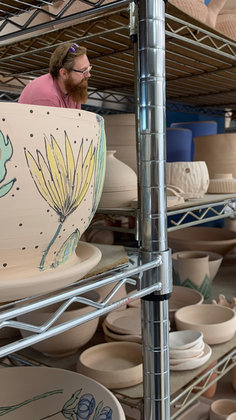 Critique club is not just about the critique. I mean, it is, but it's really more about learning how to look at art from an unemotional place and figuring out what works, what doesn't, and how it could be stronger as a piece of art. Even if you don't have a piece to bring, you can learn an extraordinary amount about making things well. Listening to people talk about their processes and having dialogues around goals, strategies and problem solving is an invaluable and unique way to learn about the creative and not-so-creative approach to making things with clay. So just come. It's awesome. Also...Dylan often brings home baked goods to these things, and I have to tell you, he is not only good at making pots and hiding in bisqued vases. He is also very good at yummy treats. See you Tuesday night at Burnish at 6 pm!! There is nothing like this in Bellingham, and it is a small slice of the value you get by being a part of the Burnish community. Take advantage. Extraordinary InstructorIf you have been around the studio for any time at all, you know Hilde Schaaf, clay artist, instructor, and living legend. Hilde started in clay at a very young age in Germany. She grew up in an area of Germany where there is a long-standing pottery tradition, in a family of potters. It is easy to see her ease and expert touch in her work and in the way she assists her many students. Hilde also makes her own bamboo brushes, which led to an exploration of mark making and brush strokes on her work. She has worked with some of the greats, was a studio potter for roughly 30 years, and now, she is at Burnish Clay Studio. Hilde helps. She feeds people, supports friends and colleagues constantly, and is incredibly generous with all her amazing clay knowledge. If you get a chance to take a class with her, count yourself lucky. She is truly a gem of a human and a spectacular maker. Tip of the weekThis tip comes straight out of a throwing class this week and it's about trimming. Trimming seems like it is mostly dependent on the tool you use, but the real secret to trimming is that you have to let the wheel do the work. When your clay is leather hard, and your wheel is moving slowly, this is when most people push down on the tool, dig in to the clay, and make mistakes. The best way to trim is to speed the wheel up and allow the tool to skim the surface of the clay without too much pressure, thusly allowing the clay ribbons to come off the pot evenly while minimizing the occurrence of chattering. If the attempt of trimming does result in chattering, simply take a small trimming tool, find a corner and trim off an unpredictable and different thin pattern around the pot to throw off the rhythm of the chatter. Once you have that thin and non-rhythmic pattern carved into the pot, you can use your large tool and the wheel's speed to trim off all the chattering and the uneven pattern you created to obscure it. Local OpportunityBellingham National Juried Art Exhibition and Awards
Acts of Healing and Repair The Whatcom Museum is seeking submissions by artists of all backgrounds who respond to the theme of healing in their work for this year’s Bellingham National Exhibition titled Acts of Healing and Repair. This fourth biennial Juried Art Exhibition and Awards will take place at the Whatcom Museum’s Lightcatcher building, and will open to the public Sunday, November 12. The guest juror of this year’s “Bellingham National” is Grace Kook-Anderson, the Arlene and Harold Schnitzer Curator of Northwest Art at the Portland Art Museum. Artists may submit up to three artworks for consideration for this exhibition. Application fee of $35 is a one-time fee. Important dates to note: August 11: Deadline for Entries. Apply online. September 25: Juror’s selection for the Bellingham National 2023 will be announced via email and the CaFÉ website October 23 – 28: Artwork received at Whatcom Museum via shipment or personal delivery November 11: Exhibition preview reception November 12: Exhibition open to the public February 25, 2024: Exhibition closes and artwork is returned Staff Spotlight!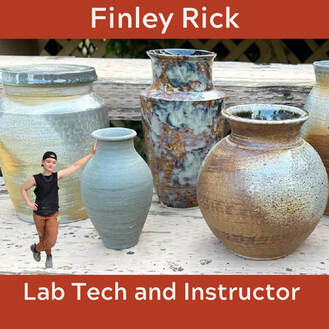 In an ongoing effort to familiarize folks with Burnish Clay Studio and all the wonderful things that happen here, we are including a segment once every few weeks where we will introduce one of the staff at Burnish. This week, it's the one and only...Finley Rick! I asked Finley to jot down some details for an IG post and they gave me this: “I started ceramics back in high school. I needed an art credit and figured I should give ceramics a shot. I'm so glad I did. I fell in love with messing with mud and I never looked back - I’ve been creating pottery for 8 years and teaching off and on for 4 years. I started working at Burnish in 2021 as a studio technician and instructor, and I can honestly say it has been more than I ever could have asked for. I can't tell if I have more fun doing tech or teaching! One of the many reasons why I love working and creating at Burnish is the opportunity to be a part of such an uplifting, inspiring, and accepting community. I’d had challenges finding a safe space as a non-binary person in the art community until I met the folks at Burnish. Lately I have been experimenting more with soda firing and contrasting the simple lines and refined shapes of my pots with the unpredictability of soda!” Up and ComingJuly's critique club was pushed to August 1st so more people could participate. Please do come, bring any work you would like discussed, (we are incredibly encouraging and wonderfully helpful), and bring snacks or drinks if you are so moved. The club starts at 6ish and all levels are welcome and encouraged to attend. The next Cone 10 community soda firing lead by Zoe Petersen will be loaded Mon 7/31.
The next Cone 6 community soda firing lead by Ann Marie Cooper will be loaded Mon 8/21.
Fall classes will be announced soon, so please watch your emails and IG for announcements if you are interested in signing up for fall classes. If you are not signed up for the Burnish Clay Studio Newsletter, please sign up below! You will get all the Burnish news in a timely and efficient manner. Ceramical InfluencesIf you have been making with clay for any amount of time, you most likely have ceramic artists you have followed, studied, or like me, completely lost your mind over. One of my earliest influences was Beatrice Wood. She was part of the Dada movement and became a ceramicist quite late in life, after having taken a ceramics class in order to replace a lusterware teapot she had broken. Like so many of us, after she got her hands in clay, she was hooked. If you are interested, read her autobiography, I Shock Myself. Another of my early influences was Betty Woodman. Mostly due to her surface design and her tendency to deconstruct traditional ceramic vessels. I am still always searching for influences, in all genres of art, but my love for clay always brings me back to ceramic artists, their work, their stories, and their philosophical approaches to clay. Tip of the Week!This is specific to commission work, and it is my experience that at one time or another, we all get commissioned to do some type of piece for friends, family, and sometimes, strangers. Here are some guidelines I cling to for dear life when creating commission work:
Artist ResourcesResidencies
The right residency can more than an opportunity to enrich your personal practice. Some residencies have the power to launch your career as an artist. Here are a few: Skowhegan School of Painting and Sculpture Whitney Museum of Art Independent Study Program The MacDowell Colony National Parks Arts Foundation The Bemis Center for Contemporary Arts  Hello and welcome to the Burnish Clay Studio Blog. In the studio, classes are well underway, we had our first Raku firing of the session on Saturday afternoon, and we have re-scheduled the Critique Club for August 1st at 6 pm. Additionally, I have been having a lot of fun on Burnish's Instagram account. I took some pics of the two Dylans and have been super-imposing them into studio pics once or twice a week just to mix it up. We are also seeing more and more people tag us in the posts of their pieces, and we love that. Please do keep it coming, and if you haven't done it yet, please do! 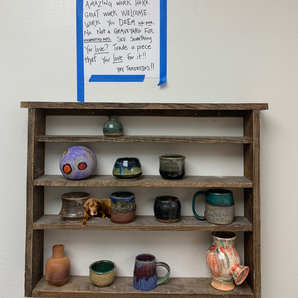 There is a poll in the studio regarding a karaoke/sing along night. It's on the white board next to the glaze samples. If you can, let us know, (by marking it on the board), if you would be interested in singing along to your favorite tunes on a karaoke machine while working on your pieces. As soon as we know if there is another interest, we will go about scheduling the event. The picture to your left is not of the poll, but of the Tradesies shelf with Dylan on it. Knowing When to Let Go.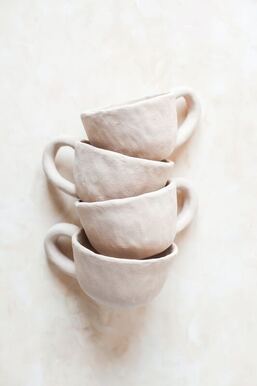 When you first learn how to create with clay, you tend to save everything. Every piece you make is rife with learning opportunities. It is the task of every ceramicist to become familiar with drying time, warping, cracking, and clay shrinkage. In addition, potters must learn how to use the wheel to create usable ware; including how to trim a decent foot and shape a pot worth holding. Creating satisfying surface decorations can at times feel like a life-long process. After you feel like you have gotten the hang of the tools, materials, and patience required to work with clay, it becomes less necessary to save every piece you make, simply because the rudimentary lessons have been learned. So how do you decide when to let go? Do you measure the value of a piece by the lessons it can teach you? Is there more value in setting out with a plan in mind for each piece, and seeing how far you can go down that path before having to discard it when it goes too far from goodness? The answer is most likely different for every maker. It is a special kind of accomplishment when you no longer have to hold on to the pieces that aren't quite there, but most learners don't take the time to celebrate that milestone, most likely because they are too focused on the next project. As an instructor of many years, I have watched students throw work away because the piece didn't meet the unrealistic expectations they were holding on to, and have observed others struggle for too long with a piece that was too far gone to save. The best advice I can give around letting go is to pay attention to how you are feeling when you are working on anything. If you are forcing it, struggling, or constantly frustrated, it might be worth considering if it is worth it. After all, this practice is really supposed to be relaxing in some measure, and if working on a piece is causing so much stress, that might be a sign that it is time to let go. The other consideration is, and this is a biggie, what will happen to that piece after you are finished? Meaning, is there a place for another mediocre cup in your cabinet? Does your mom still love everything you give her, or, when you give your work to friends, do they thank you less enthusiastically than when you gave them those first (few) pieces? One of the ways I know to throw something away is if it has been in a bisque state for any length of time. If I have work that has been sitting on the bisque shelves for any longer than three weeks, chances are I am not invested enough to glaze it. Likewise, if I come across a ware board full of work that I forgot I made, I force myself to examine whether or not I should be putting those piece through the system. We each (should) have our own ways of determining when we should let go, and if you don't know, here is a list of things to think about when deciding:
It is worth considering these things when making objects that do not break down easily. Ceramics in most cases last forever, and it is simply not prudent to keep everything you make. You will save so much time if you set up guidelines for yourself before your throw yourself into making a bunch of work that might end up in Goodwill, or worse, the garbage. Tip of the WEEK!Here are the guidelines I use when I am considering throwing away my work. Keep in mind that I do a lot of class demonstrations, and also sell my work at shops around the Northwest. The way I use this rubric is that if I get three out of five "yes" answers, I keep the piece. 1. Is this the best version of this piece that I can make right now? 2. Do I have a place to sell this, or a friend/family member I can give this to without annoying them with yet another piece of pottery? 3. If I see this piece through to the end, am I going to learn anything from the level of experimentation I undertake? 4. If this is a demo piece, will the students I am teaching learn anything by watching me complete it? 5. Is this work something I have kept track of in a timely manner as it moved through the firing/glazing processes? Once you get your clay legs under you, you might want to think about ways to measure if something you have made is kiln worthy. Letting go of work that isn't up to standard is a lesson well worth learning. The sooner you can be more discerning about the work you let through, the more satisfied you will be with the quality of your work overall. Artist ResourcesGrants with rolling deadlines-
Pollock Krasner – Rotating, No deadline – Information here. Awesome foundation – No deadline – Information here. One Grant Library for Research Online- Foundation Center. Foundation for Contemporary Arts Emergency Grants – Information here CES Artslink U.S. and International Grant Opportunities – Information here Upcoming grant deadlines Harpo Foundation offers grants to under recognized artists. To submit you must be at least 21 years of age and there is a $15 fee for entry. Grants of up to $10,000 are awarded to multiple artists dependent on yearly budget. In order to receive further information about deadlines for submission, visit the website and sign up for email notifications. The Elizabeth Greenshields Foundation supports representational artists emerging artists who demonstrate a commitment to a lifelong career in the arts. Grants are awarded on an ongoing basis in the amounts of $15,000 and $18,000 Canadian. For more information and to apply, visit the foundation website. Deadlines are rolling. What's happening in the studio?Summer session is under way! It's great to have people back in the studio, and classes so far have been action-packed and super fun. Remember to get into the studio as much as you can to practice, it's the best way to improve your skills. You can use either side of the studio as long as there is not a class or workshop happening during that time. There is an overflow pottery wheel area for practicing during pottery classes in the back of the studio, and there are a few tables around the studio for use when handbuilding class is happening. As of today, the studio class schedule is as follows: Hand Building/Glaze area:
Tradesies!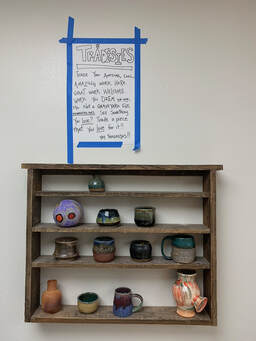 After a slow start, the TRADESIES shelf is starting to show some signs of greatness. This is a wonderful opportunity to grab something you might like to have in your home and trade something groovy you made in exchange. There are some cool things there right now, so the next time you're in the studio, check out this situation and see if there is anything there that catches your eye and leave something groovy in return! If you are not a tradesies shelf type of person, you can always offer to trade with any other artist in the studio. It's a nice compliment and very often, the person you ask will be quite complimented by the offer. Online classes?We are in the midst of creating online classes for kids and their parents in the local area. They will be simple, come with a small bag of clay and include the ability to bring your finished work in to get fired when you're done. We are very excited about these and hope to get a few done to launch in August. Stay tuned! Pottery as a Mirror.One of the things I teach my beginning students as they are sitting at their wheels for the first time is that the practice of pottery tends to be a bit of a mirror. Your initial approach to clay is often reflected in your personality. One of the most common things that first timers struggle with is being aggressive enough to move the clay, and compassionate enough to let the clay do what it needs to do to grow into a finished piece of pottery. Clay is alive, and it reacts to even the slightest touch, while simultaneously needing a firm hand to get centered and stay there while the pot is being brought into being. I realize that's a passive phrase, illustrating an active experience, but that's life sometimes. Just like pottery, I guess. The point is to keep at it. No matter who you are or where you are in your clay journey, practice will always help you improve, and watching and learning from many people will help you see that there are a million ways to throw a pot, and your job is to find the way that best suits you. Happy potting! Tip of the Week!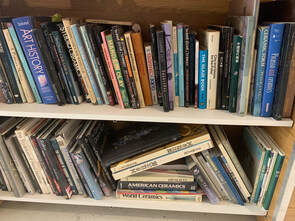 Expose yourself to art. There are a ton of cool books in the Burnish library, and there is no harm in checking out all the cool stuff in them. Reading some of them might help, too. It's what people used to do before the interwebs, and there are tons of images in these books you just won't find on the web. Dig in the next time you're in the studio. Artist ResourcesWe have groovy new glaze samples at Burnish Clay Studio for electric and reduction firings. We even have examples of Burnish glazes on all the clay bodies we use in the studio! I know. It's a lot. Personally, when I saw the good work our techs, Finley and Parissa are doing, I was somewhat blown away. It's just more proof that good things happen in good places like Burnish. Summer Classes Start FridayBelieve it or not, summer classes are starting on Friday, so get ready. Summer session only lasts eight weeks, so take advantage of the open studio times whenever you can this summer. The ten week sessions normally go by pretty quickly. The eight week session are just like that, but faster. Studio Etiquette Dylan LOVES a clean studio. Dylan LOVES a clean studio. There is no question that Burnish is a great place to make work. The number of wheels, the clay bodies, the glazes, and the helpful techs and teachers all contribute to making Burnish the amazing community that it is. While working, it is important to remember that it is a community, and part of feeling happy in that community is taking good care of it through cleanliness. Make sure to clean your wheels, tools, work stations, and the wedging area whenever you use it. Don't put it off, because it is easy to forget. Additionally, if you are cleaning the area you have used and notice that something in the general vicinity needs some tidying up, please lend a hand. That helps Burnish be better, for you and for the blossoming community which operates there. Monthly Artists CritiqueOur June critique was quite successful. We all got a lot out of the dialogue around the different works of art that people brought in to discuss. It was mentioned in the critique that some people might be intimidated by the name, and I just thought I would use this space to express that the critique is facilitated by and with people who focus on encouragement, support, and creative growth. There is no tearing down of ego at these critiques because that is not a useful tool in a community of inclusion and acceptance. So, our next scheduled critique is happening on July 25th at 6 pm. Please, if you are interested, do come. At the very least, it's a nice place to talk with like-minded people about art, pottery, and food. Yes, food. It always comes up. Do You Even Insta?Our Instagram is going next level. We will be posting challenges, tips, and all kinds of fun stuff for the people who follow! Don't miss out. Take a look! Weekly Tip!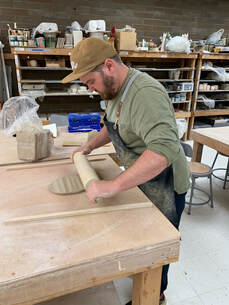 When creating functional work, approach it in a way that recalls the pleasure one can take putting one's lips to a mug, holding that mug as the individual strolls through their garden in the morning, or considers the strategy for the day ahead. Too often, when we sit down at the pottery wheel, we forget that it is a privilege and an honor to create functional objects which will become a part of someone's life. Our ability to affect a life in this way is a gift. So, smooth those edges, lighten those bottoms, and remember what it feels like to hold something that feels like it was made just for you. Artist's ResourcesThe Studios at MASS MoCA Residency
Deadline: July 8, 2023 Fully-funded fellowships at MASS MoCA are available for two or four-week residencies, including General Fellowships and fellowships for Black or Indigenous Artists, Massachusetts Artists, Oregon Visual Artists, and Puerto Rico Artists. The opportunity is open to national and international artists, and it is free to apply. Selected artists receive private studio space, housing, access to workshops, member benefits, and more. UNIDEE and Cittadellarte – Fondazione Pistoletto Residency Program Deadline: July 9, 2023 This open call for the residency program Neither on Land nor at Sea pluralizes Mediterranean concepts/spaces as sites of world-making and experimentation in communal living. Applications from artists, curators, writers, theorists, activists, are welcome and encouraged. Residents will be offered the opportunity to expand on their ongoing research and practice exploring Mediterranean complexities and geographical thinking in the arts and beyond, within a group of peers and invited guests. Participation in the Autumn module is offered free of charge, and the residents will be provided with free accommodation at Cittadellarte. Residents will be required to arrange and cover expenses for their travel to/from Biella and for the food/living costs whilst in Cittadellarte. Chashama and Blick Sidewalk Studio Open Call Deadline: July 11, 2023 In collaboration with Blick Arts Materials, Chashama is accepting applications from artists who would like to utilize a window display for the presentation and sales of artwork at the 23rd Street Blick store in NYC. QUEER | ART Illuminations Grant Deadline: July 12, 2023 This annual $10,000 grant will support Black trans women visual artists, drawing attention to an existing body of work. Four finalists will also receive a $1,250 award. Winning artists will receive additional professional development resources and further guidance to bolster their creative development in the field. Penland School of Craft: Resident Artist Program Deadline: July 12, 2023 Penland, NC Penland’s Resident Artist Program is one of the longest-running residencies in the US and is designed for professional craft artists who are at a pivotal moment in their creative practice or career. Candidates can apply to either a one year project-based residency or a three year career transition residency. They encourage self-motivated, focused individuals working in traditional and nontraditional studio crafts to apply. Crosstown Arts Residency Program Deadline: July 15, 2023 Memphis, TN Crosstown Arts hosts residencies in an urban setting inside the 10-story, million+ square foot, former Sears distribution center in Memphis, TN. The residency is open to applicants from any creative discipline, including visual arts music, filmmaking, and writing in all genres. Residencies include private studio workspace, lodging, access to Shared Art Making, and free access to various Crosstown Arts events. Residents are asked to participate in a limited number of public engagement activities such as informal artist talks or open studio events, depending on the length of the residency Loghaven Artist Residency Deadline: July 15, 2023 Loghaven invites artists working in architecture, dance, music composition, theater, visual arts, writing, and interdisciplinary practices to apply for residencies occurring in 2024 and 2025. Both emerging and established architects are encouraged to submit applications. Loghaven provides all resident artists with a living stipend of $850 per week in addition to travel and freight reimbursement. Art For Change Prize 2023 Deadline: July 17, 2023 This free-to-enter prize is an international art initiative from M&C Saatchi Group and Saatchi Gallery. This year’s prize asks emerging artists to creatively respond to the theme of Regeneration. A total prize fund of £20,000 will be split between six winners, and winning artists will be able to exhibit their work at Saatchi Gallery in London. Entry is open to emerging artists based in: UK, Europe, Americas, Asia, Australia, Middle East & Africa. A winner from each location will be decided by the judging panel before a grand jury selects the overall winner. Fountainhead Residency Open Call Applications Open: July 17, 2023 Miami’s Fountainhead Residency seeks exceptional visual artists who are at a pivotal point in their career where connections and conversations are the catalyst needed to evolve their art practice. Open call applications will be accepted until 300 applications have been received. Applications will go live on Monday, July 17 at 9:00am here and are open to artists living outside of South Florida Deadline: July 21, 2023 This year-long program leverages arts and culture to make creative public policy interventions around housing and related social justice issues. There is a $10,000 honorarium plus a $10,000 budget for project expenses. Projects supported by the residency may take place anywhere within the United States, including Puerto Rico and the US Virgin Islands Boynes Artist Award Deadline: July 30, 2023 The 9th Edition of this award will accept artists of all career stages, experiences, and backgrounds within the categories of Emerging Artist, Young Artist, and Professional Artist. Winning artists have access to a $3,500 cash prize pool, $250 in art supplies, the creation of a professional artist website, publication, newsletter features, and long-term support and guidance from the Boynes Artist Award team. Fee: $25-$35. Grand Canyon Conservancy 2024 Grand Canyon Artist in Residence Deadline: July 31, 2023 Grand Canyon Conservancy’s Artist in Residence program supports contemporary solo artists who wish to contribute to the cultural and aesthetic legacy of the Grand Canyon. Solo contemporary artists exploring concepts of conservation, cultural identity, or community through any discipline are encouraged to apply. They prioritize artists whose work and outreach programs best fit the park’s interpretation and education goals of telling stories that have been excluded, hidden, unknown, untold, or under-emphasized. Fee: $45 National Parks Arts Foundation: Hawai’i Volcanoes National Park October 2024 Artist in Residence Deadline: July 31, 2023 The National Parks Arts Foundation invites artists in all artistic media to join their 2024 artist-in-residency programs — October is currently (from July 1st onward) open to apply — at Hawai’i Volcanoes National Park, which offers a $4,000 stipend, housing, and artist events. Apply at their residency listing submittable. Bemis Center for Contemporary Arts Open Calls Deadline: August 1 Artist-in-Residence Open Call: Located in the historic Old Market, Bemis Center’s 110,000 square foot facility accommodates a broad range of artistic activity. Selected artists-in-residence enjoy generous sized, private live/work studios complete with kitchen and bathroom, a $1,250 USD monthly stipend and $750 travel stipend. Due to the limitations of B2 visas (touring/visiting), international artists-in-residence are eligible to receive reimbursement of qualified expenses, such as airfare, ground transportation, and meals. Selected artists are responsible for organizing travel to Omaha to attend the residency. Fee: $40. Peters Valley School of Craft Deadline: August 1, 2023 This residency is seeking artists who work in blacksmithing, ceramics, fibers, fine metals, wood, drawing/painting/collage or printmaking, and is open to all artists from emerging to professional. Selected artists will spend either two weeks or one month immersing themselves in time dedicated to their craft. A private room in a fully-furnished shared house and unlimited access to a fully-equipped studio (all utilities included) will be provided at no cost to the artist. This residency opportunity also pays the artist a stipend of $500 for two-week long residencies and $1,000 for month-long residencies to help off-set the costs of materials and travel. The acquisition of all materials and supplies are the responsibility of the artist. Due to the rural nature of their campus, a personal vehicle is required. SculptureCenter In Practice 2024 Open Call Deadline: August 6, 2023 In Practice 2024 invites artists who have not yet had an institutional solo exhibition in New York City to submit proposals for solo exhibitions in designated gallery spaces at SculptureCenter. Artists are also invited to propose off-site projects, publishing initiatives, performances, and nontraditional formats, which will be considered based on feasibility. Up to seven artists will be selected to participate in the program from spring 2024 to winter 2025. Each exhibition will be on view for approximately four to six weeks. Centrum Residency Programs Deadline: August 15, 2023 Emerging Artist & Writers Residency This Residency provides stipends, multiple resident gatherings, visiting artists & curators, and an open studio/public reading, and is aimed at writers, visual, and interdisciplinary artists in the Pacific Northwest who are towards the beginning of their creative paths and can benefit from the time to focus and receive support from a community of peers and specialists in their fields. Malta Biennale Open Call Deadline: August 25, 2023 This call is open to both local Maltese and international artists, curators, curatorial teams, and project managers wishing to present projects in accordance with the theme of this year’s Malta Biennale, “white sea olive groves.” Artists can apply from any stage of their career (emerging or established) and from any nation. Accepted artistic media include all forms of visual art: installation, paintings, sculptures, photography and video art. Maximum grants provided by the call are €13,000 Bryn Du’s Artist in Residence Program Deadline: August 31, 2023 The focus of this residency is to enhance local awareness and engagement in the arts by introducing new and varied artists to the Granville community throughout the calendar year. The residency is open nationwide for artists of all disciplines to apply including but not limited to those in the fields of visual arts, literature, music, theater, fashion, dance, storytelling and audiovisual studies. Stipends include $2000 for an 8 week residency and $3000 for a 12 week residency. Fee: $15. 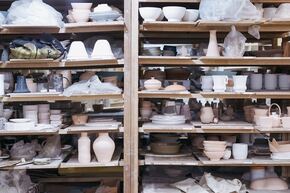 Hello and welcome to the Burnish Clay Studio Blog. This week, there is not a ton to report on, except that the AtmosQueer firing was a smashing success by all accounts, and the Bridge the Gap is well underway. Remember to label your boards, (which should be in the "Bridge the Gap" racks), with BTG and your name, so that they aren't emptied and cleaned when the time comes to do that on July 3rd. Open Spots!Are you getting the newsletter? If not you can sign up here at the bottom of the page. Below is the bit of good news that just came to us newsletter subscribers, which is a wonderful and rare development, as most of the spots in classes usually fill up within minutes. Spring Students and Members: Since we have found that people come in less often during the sunnier spring & summer months, we feel we can add to the total number of people in the studio and still keep up with the reclaim and the kiln volumes. Given this, we have added a Sunday wheel class to the line-up, and there are 2 spots in the Saturday morning class too - both classes are 10-12:30 AM and start the weekend after 4th of July. I offered it first to the people who had previously signed up for the Summer class raffle, but it did not fully fill. Before I go through the many steps that would be necessary to post this class via Social Media or to the main mailing list, I wanted to offer you the opportunity to have any friends or family that have been wanting to take a class the opportunity to register. You are welcome to forward this email to any and all of your contacts that have been asking how to get in for a class. I do not know how quickly these spots will fill since so many people have fun summer sunshine plans, but I would not wait if it is something people want to try. If it doesn’t fill by Thursday, then I will post it on the socials. A few important points:
Critique Club on TuesdayThe title pretty much says it all. Tuesday the 27th is the next critique club, which will take place at 6 pm. Feel free to bring a drink and a snack to share if you are so inclined, but it is not mandatory to do so. For this type of critique, there are some things to keep in mind.
How to Fix Anything in Three Steps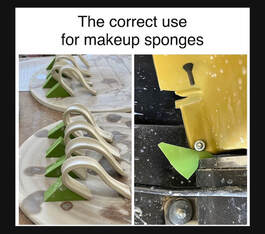 A few weeks ago I was in the studio, fixing a potter’s wheel with Finley. As I was pulling things apart to get a good look inside the workings of this particular Laguna Pacifica potter’s wheel, a potter who also works in the studio approached me with glee, explaining to me how my supervisor advised that she talk to me about fixing her wheel. She described a rumbling sound it made every time she pushed down on it. I envisioned making the trek to her home studio, opening up her wheel, and finding something quite simple to fix. In this moment, I realized she herself could do this repair, so I suggested that to her. She expressed doubt. Repeatedly. She gave me many reasons why she could not. She fully doubted her abilities in this matter. Then, in exasperation, I explained the first of three steps in Knowing How to Fix Anything.
2. Don't wait for permission to solve your own problems, be they mechanical, culinary, or emotional. The interwebs is full of “how-to” videos and PDFs describing all manner of ways to fix an astounding variety of problems. As my father used to say to me, “you don’t own anything you can’t fix yourself.” He said this to me in the eighties, around his suspicion of the growing throw-away culture he saw with the rise of mega-consumerism, but nonetheless, it’s relevant to this topic. As she was explaining how she managed to fix her potter’s wheel, (with a cosmetic sponge, as you can see in the image above), she was telling me how she had figured it out for herself, using equipment that she used for other applications, though not the original intended use, which is why she thought of it in the first place. This, as you might have guessed, brings me to number three. 3. You have all the tools you need to figure out almost any problem that comes up, you just need to start. Once you start, you will see your way through. These three steps are equally challenging, as we have grown up in a culture which has made cheap equipment easy to throw away and replace. Additionally, we are still lumbering under the weight of outdated Victorian era hoo-ha rooted in the belief that women are unable to do anything for themselves. Lucky for me, my father grew up during The Depression, when the options were limited to two; fix your stuff or go without. He infused this DIY approach within me while I was still in single digits, and this advice has taken me through many a sticky situation. The good news/bad news is that even cheaply made things are getting so expensive that throwing away equipment in favor of replacing it with another cheaply made item has actually become financially prohibitive for most of us. Yes, there is an upside to inflation and the narrowing middle class- learning that you can solve many of your own problems you once could afford to throw money at. What a time to be alive! Tip of the Week!Even though the above article is a tip on how to approach any broken/malfunctioning equipment with confidence, we here at The Burnish Blog have decided that one can never have too many tips. Patience. More than almost anything else, working with clay teaches you patience. The particular type of patience I am writing about today is the kind required to manage the emotional atrocity that is bisque ware. So there you are, making something wonderful out of this living, reactive, wonderful clay stuff. The process charms you. The interaction draws you in and you are one with the clay. You put your work on the greenware shelf for firing when you are satisfied with your efforts, and wait. Your excitement over what you have made is palpable. Your ideas for surface design and glazing dance in your head at night, keeping you up with delusions of grandeur. Then, one day, a day like any other, you spot your piece, and it's...dead. It is pink, or even more horrifying, salmon. You soul sputters. Your heart mourns the death of what once was. Your mind questions how you ever thought the work you put into the kiln could be this strange and hollow object. All seems to be quite lost. But you move on...though slowly. You run through the ideas you had in mind for glazing and all feel shallow. You hold your piece, now much lighter, and stare at the glaze sample board. You walk over to the glazing wheel and consider spinning it. You walk back to the glaze board. Finally, you choose to dip your piece in a couple of glazes then lightly brush it with copper oxide. You wipe the bottom clean, then you put your piece, that thing you once cherished, on the glaze ware shelves in the kiln yard, and you leave, quietly hopeful and cautiously optimistic. This is something we all go through, as people who love working with clay. This horrifying stasis zone where the living things we create die, and wait for us to bring them back to life with surface decoration. Through this process, after going through it many, many times, we learn a particular kind of patience. It is the patience of the hero, the patience of the snake charmer, the patience of the small but mighty who understand that there is still some good in this world, and it's worth fighting for. I am guilty of it too. My bisque ware sometimes sits on my shelves for months, waiting to be brought back to life. But this is the work we must do, those of us who have the fortitude to work with clay. We know, through practice, that while it is an arduous and chilling journey, on the other side of bisque ware lies glory. So be patient. Believe. Do not hesitate to be bold when contemplating your bisque. Put yourself into that dead object and bring that thing back to life and into the glorious future. Resources for ArtistsSo you want to get your work into more places? A couple things to think about:
Good luck and have a great week. 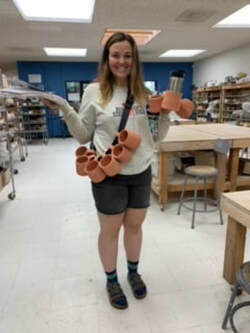 Hello and welcome to the Burnish Clay Studio Blog, coming at you from Bellingham, Washington, the prettiest little city you ever did see. Bridge the Gap is under way at Burnish, and as you can see from this blurry picture of Audrey who ingeniously carried all her bisqueware into the studio on her purse strap, people are really taking advantage of the studio time. The studio's hours are a bit truncated, but there is plenty of time between now and July 7, when classes begin again, to throw, sculpt, and glaze to your heart's delight. Critique ClubJune's Critique club will take place on June 27 at 6 pm, and Will Abraham, Dylan Attebury, and I will all be in attendance, so bring a snack, a drink, and a piece for which you would like feedback, and get ready to party the pottery way. Artist Spotlight: |
Burnish BlogNews from the studio and resources for clay artists of all kinds! Archives
October 2023
Categories |
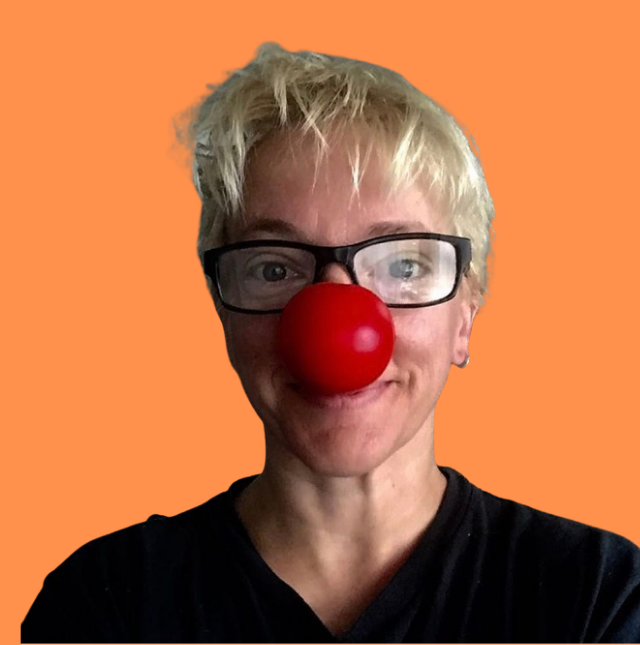
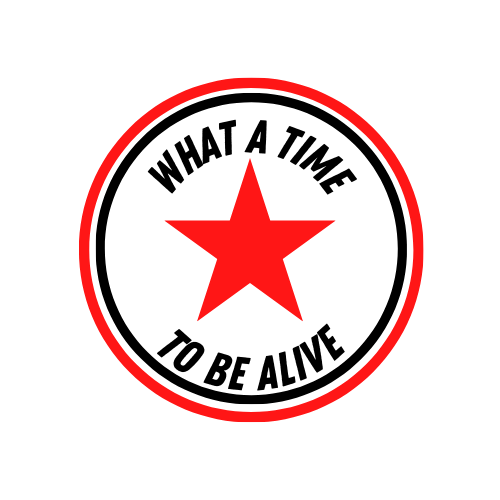
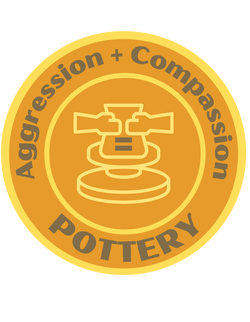
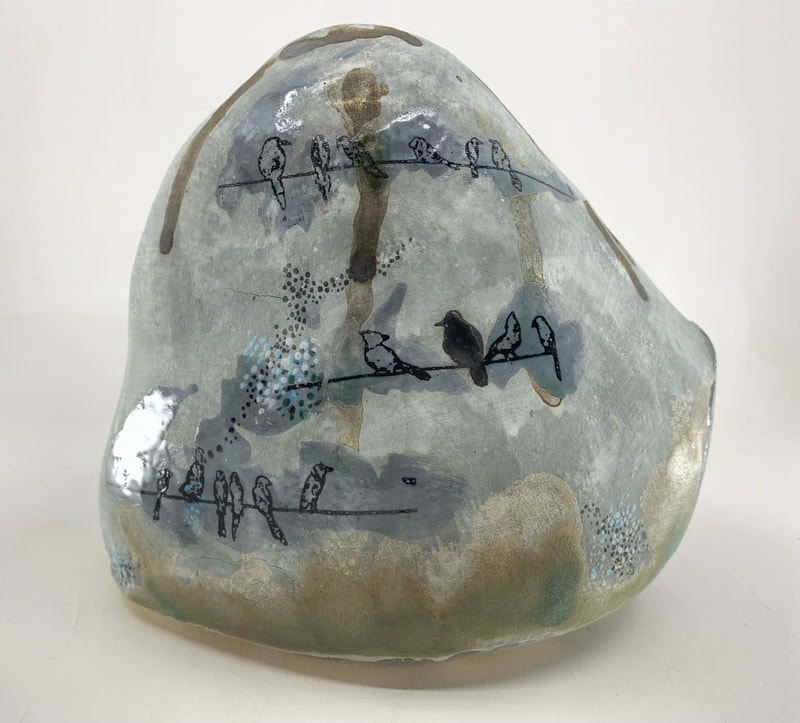
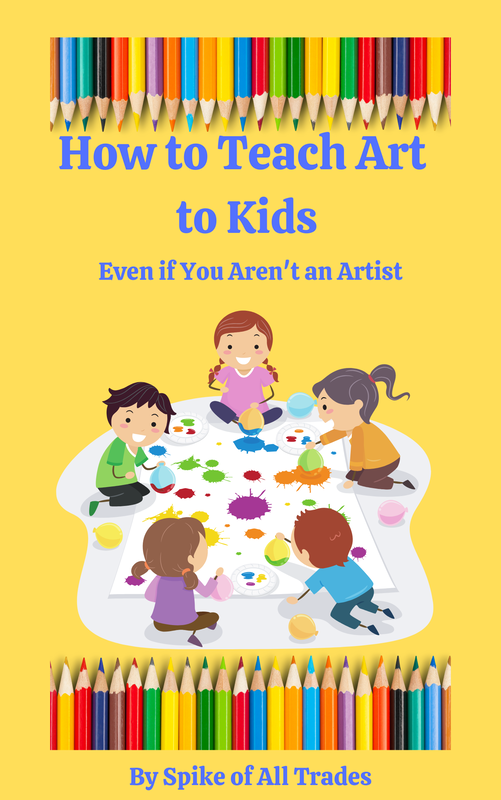
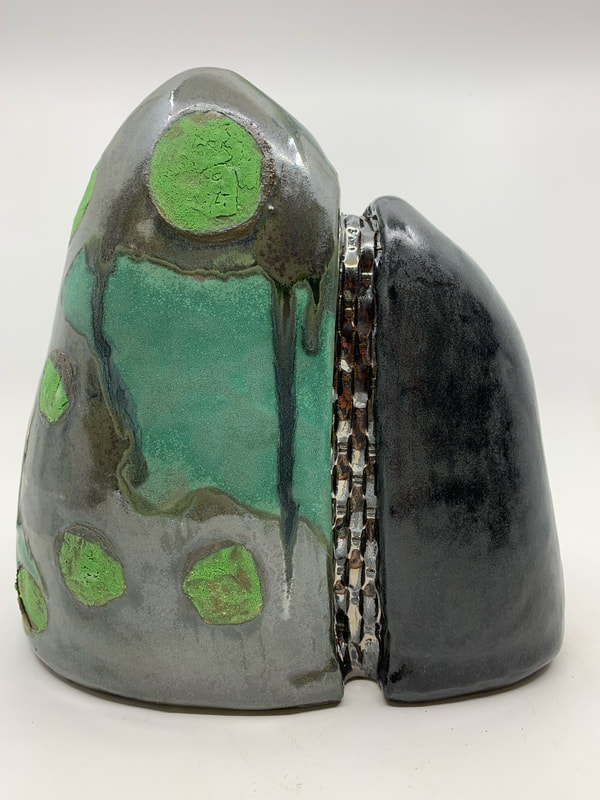



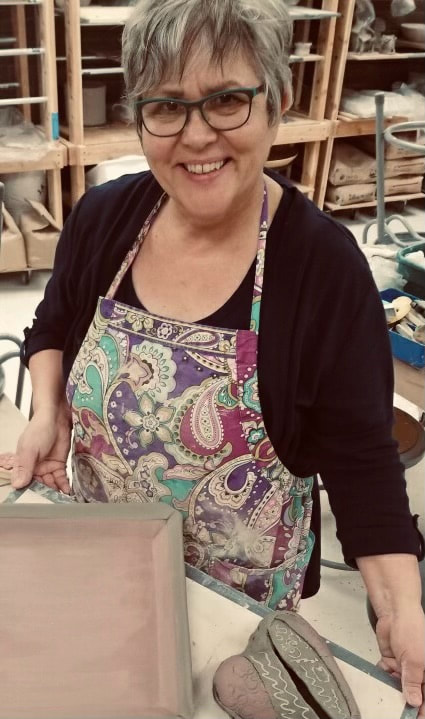
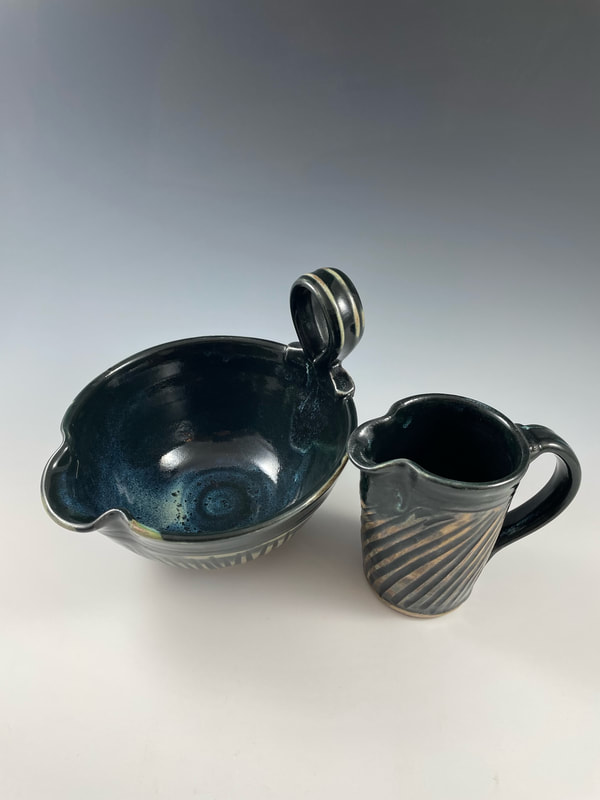
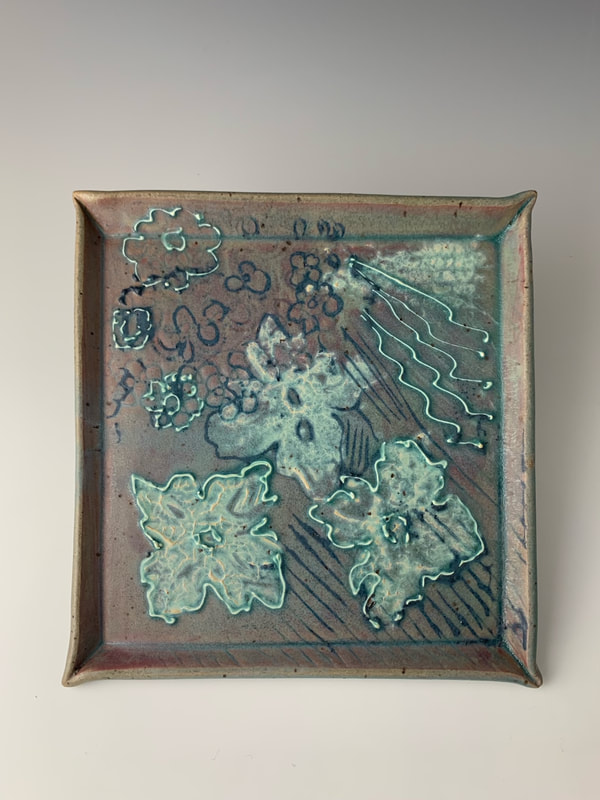
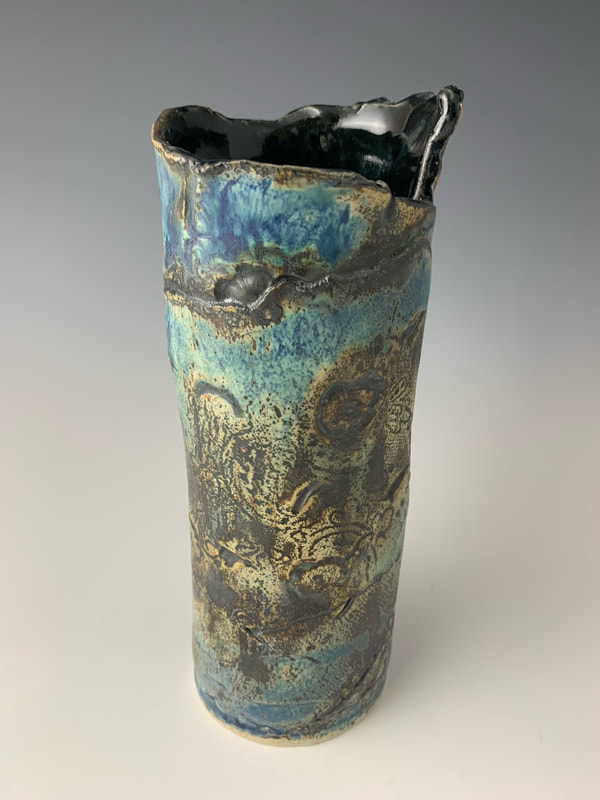
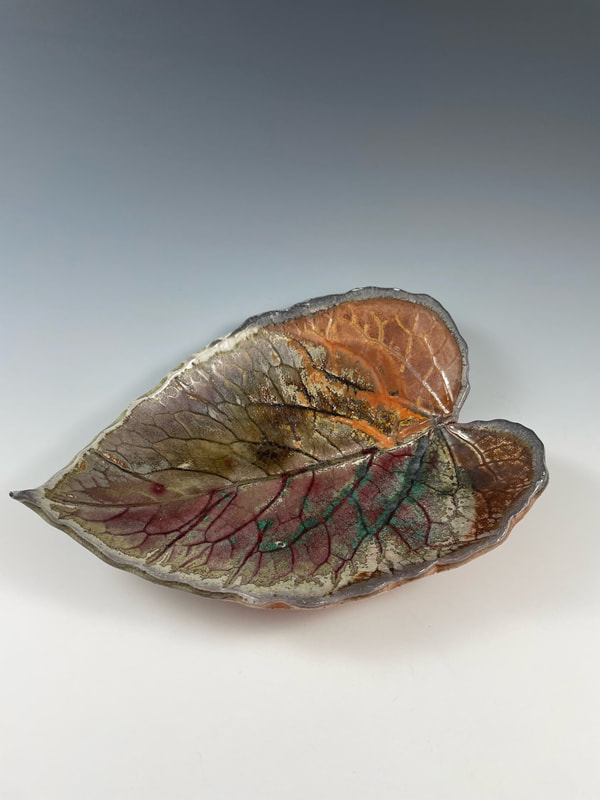
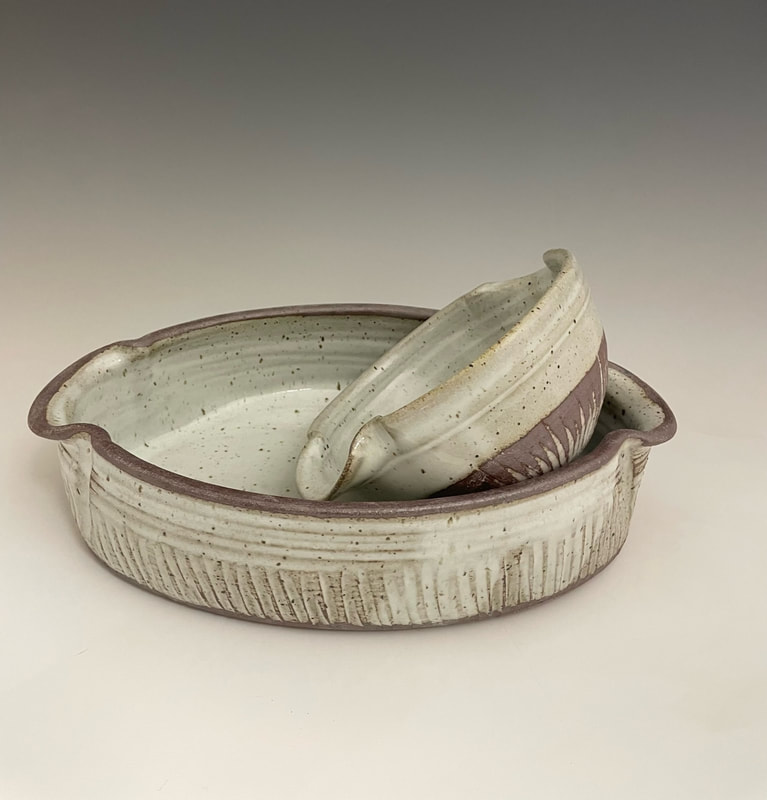

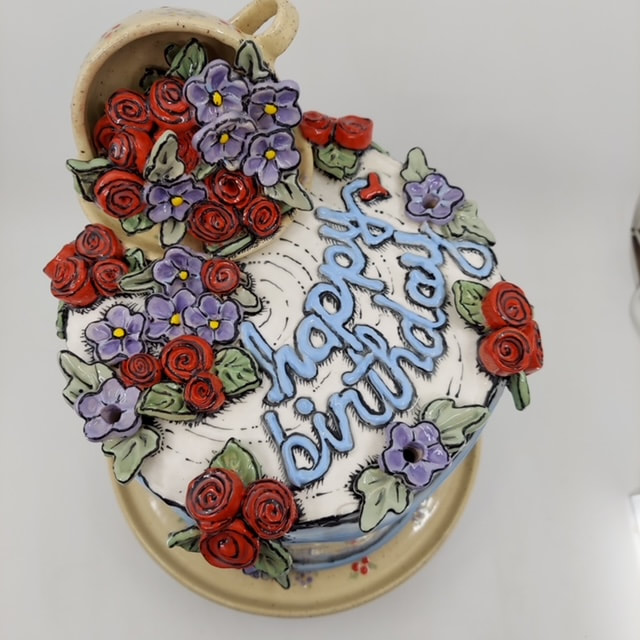
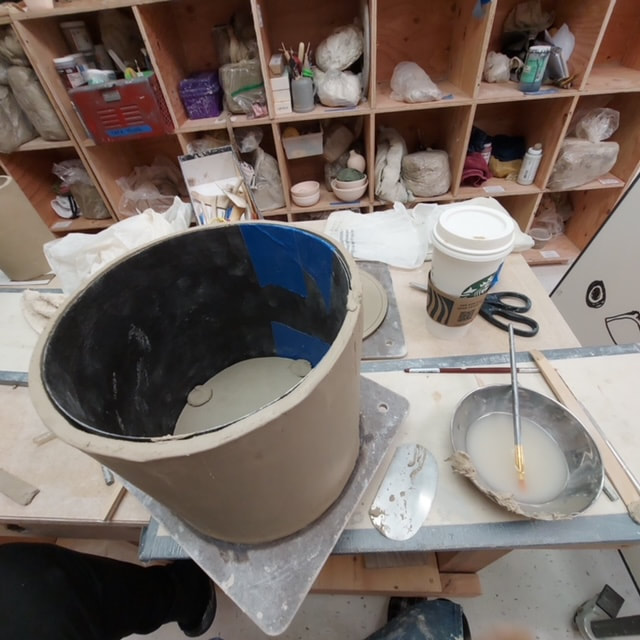
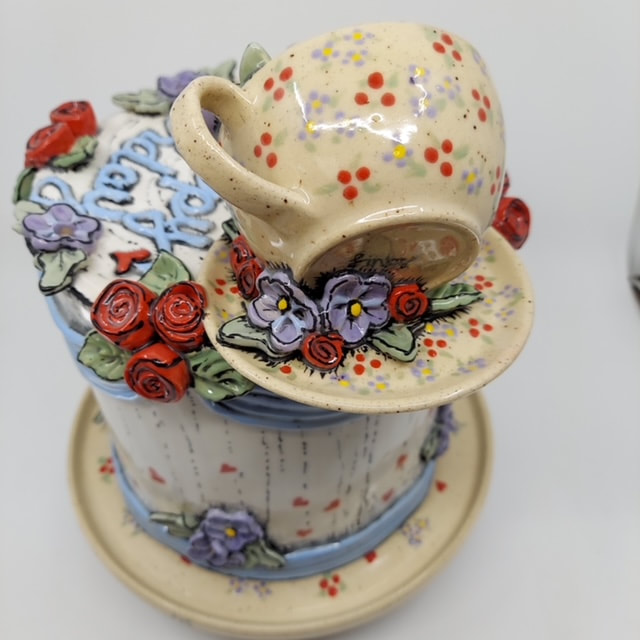
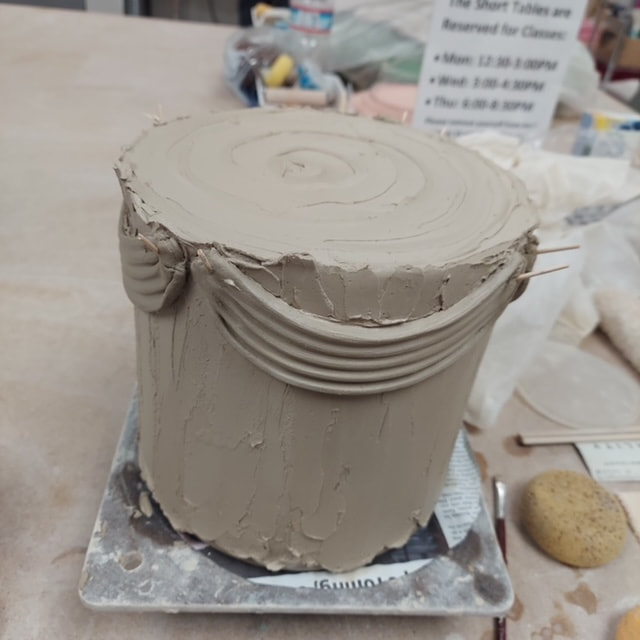
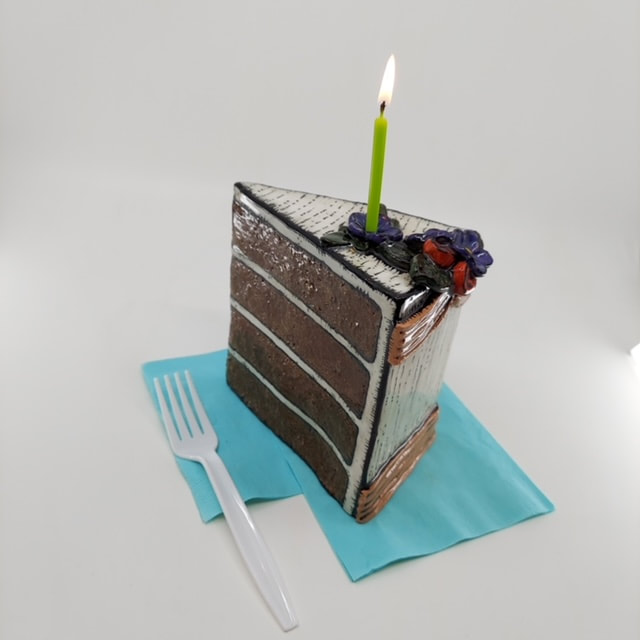
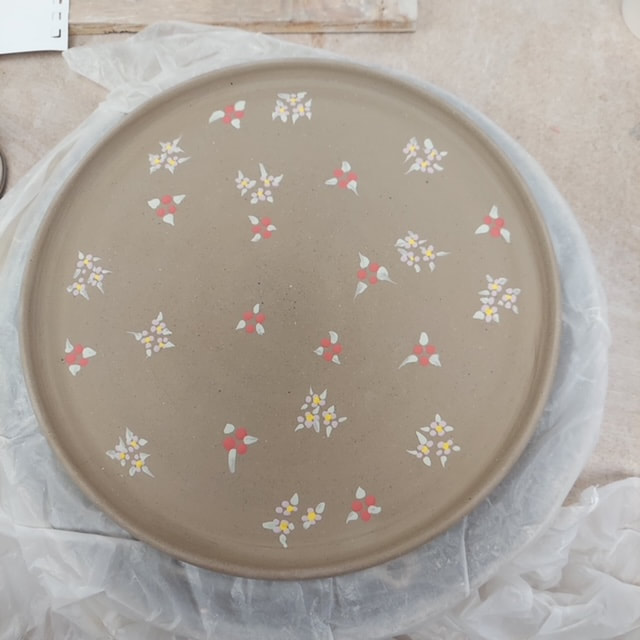
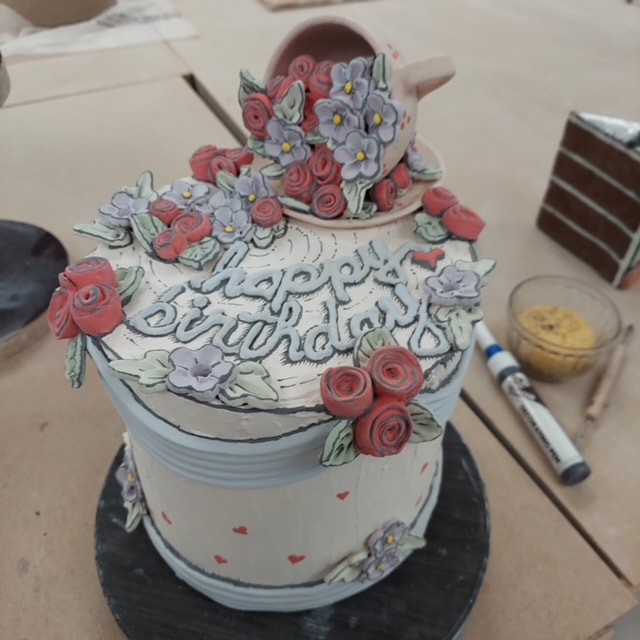
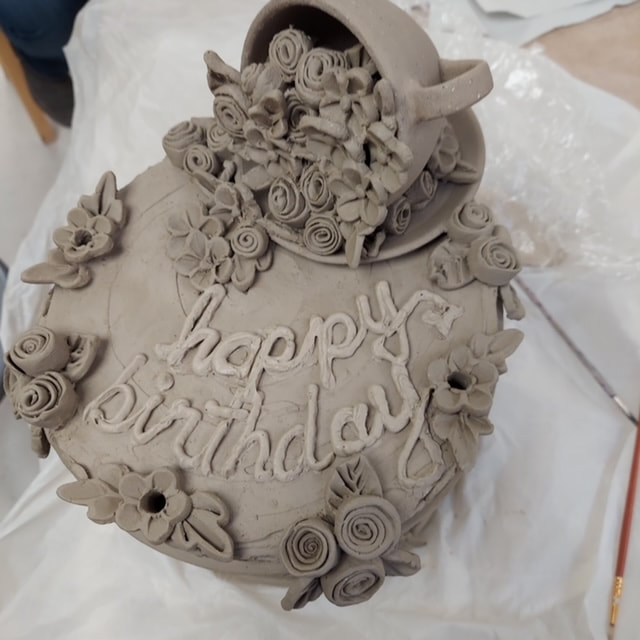
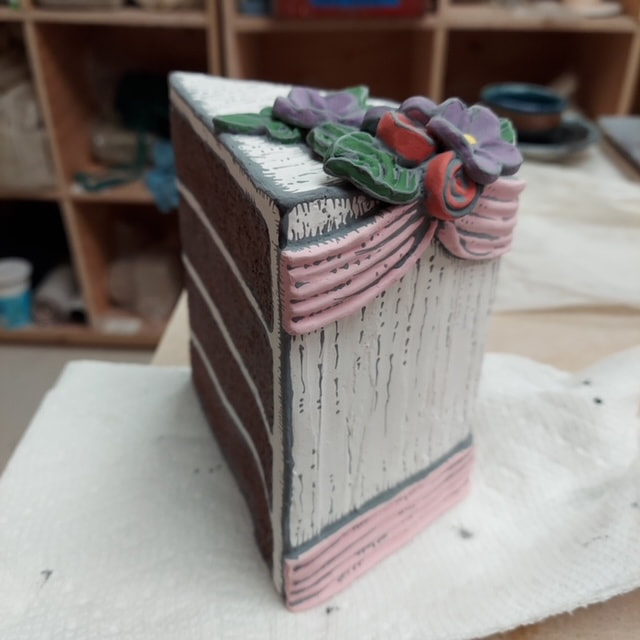
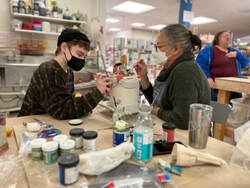
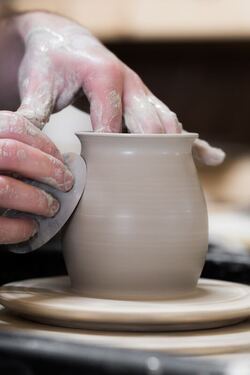
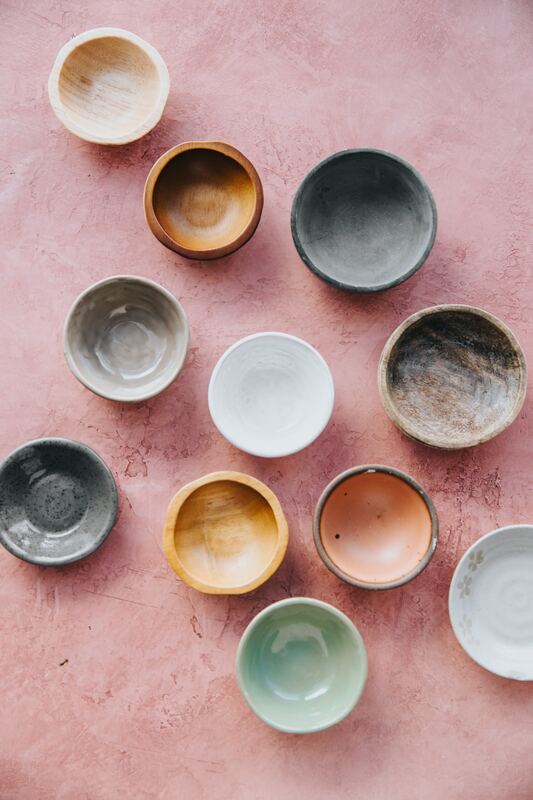
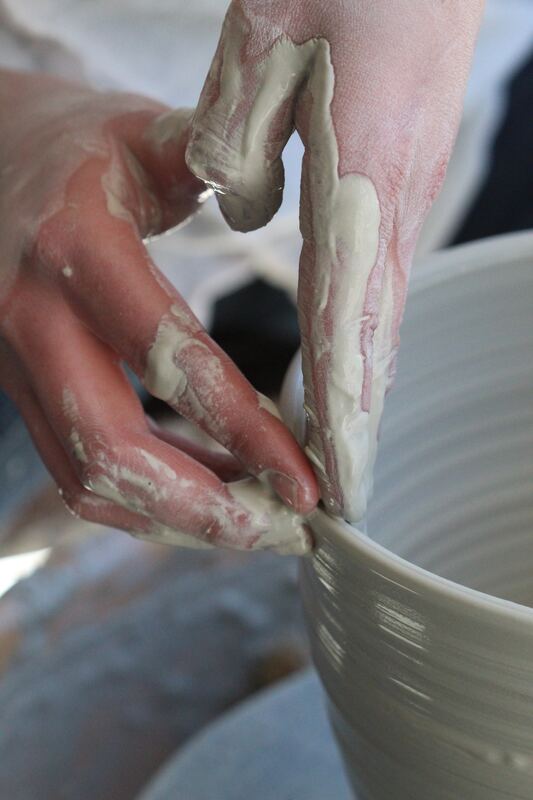
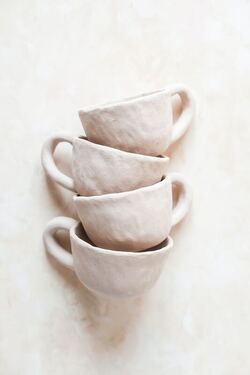
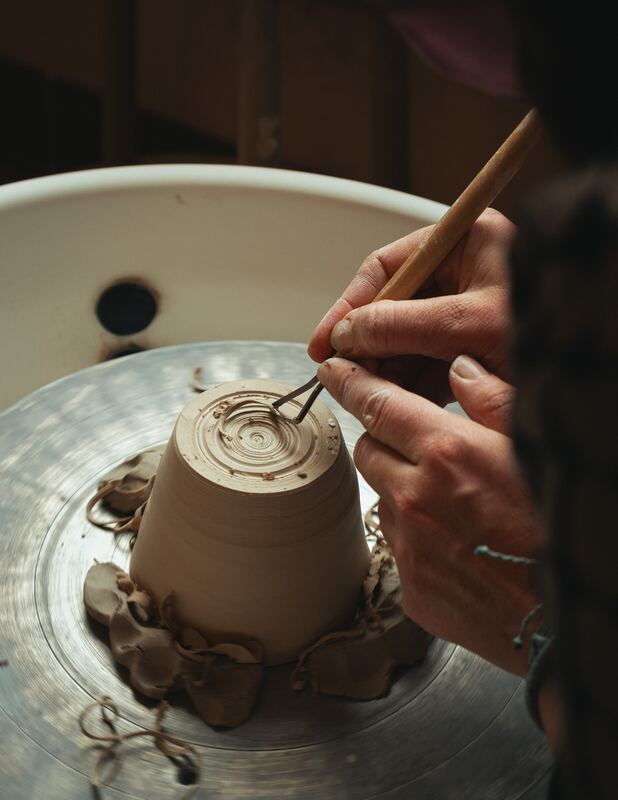
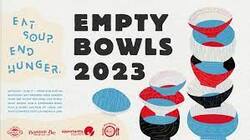
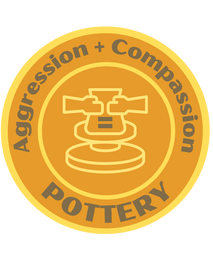
 RSS Feed
RSS Feed